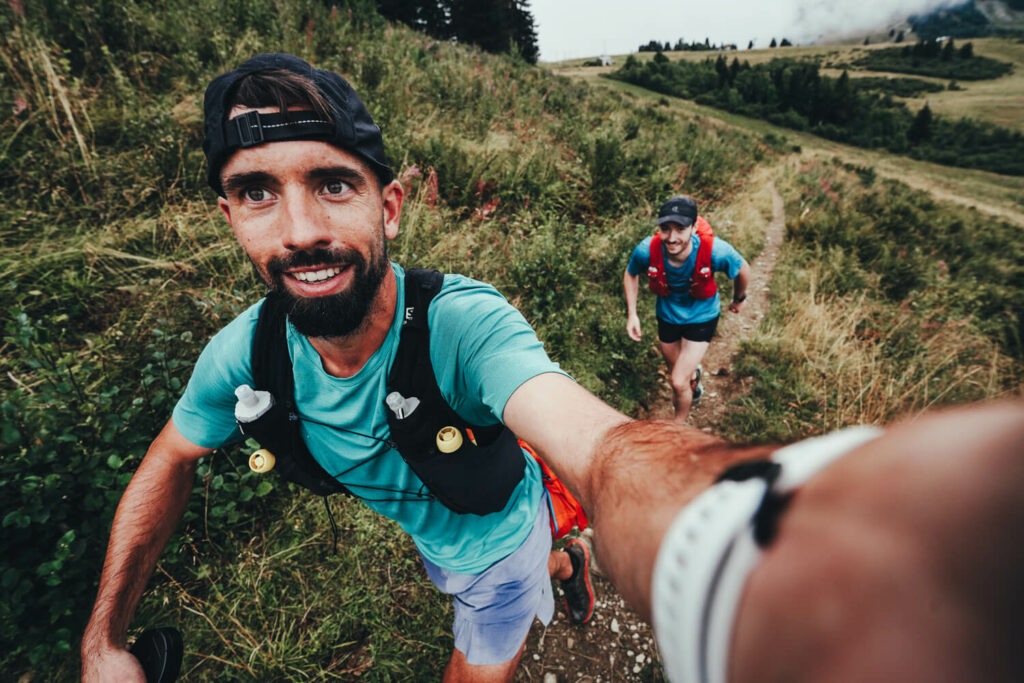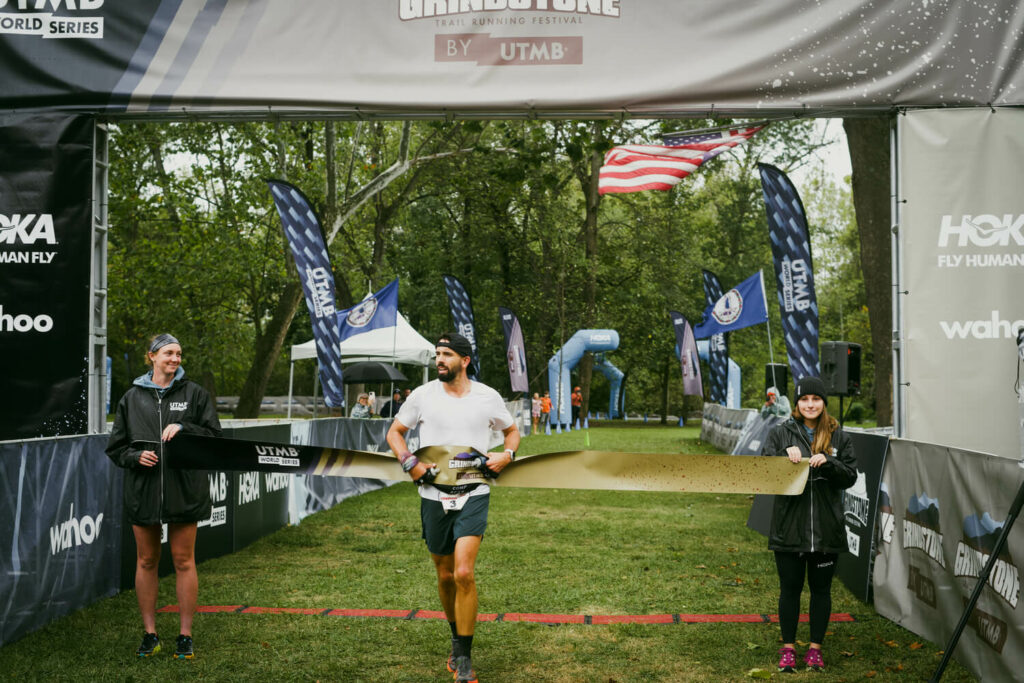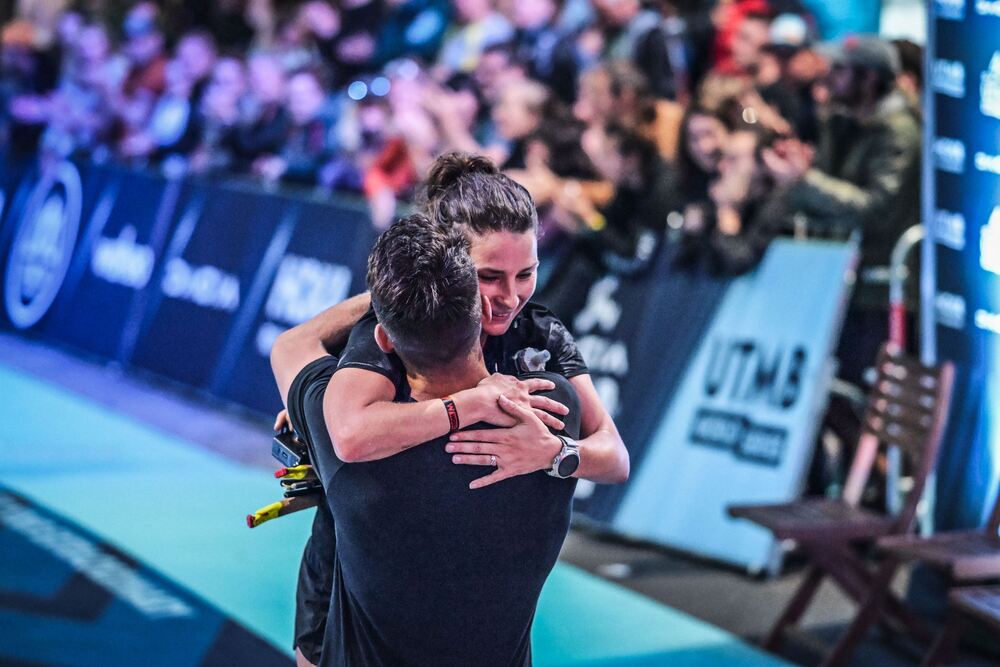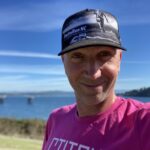Best known to many trail runners by his Instagram handle @shitinthewoods, Mike McMonagle is a passionate and very skilled Utah based photographer whose pictures regularly feature professional and community runners.
McMonagle had always enjoyed taking pictures, but around 2017 decided to invest more time behind the lens. He was not very inspired by his actual job, and photography gave him a way to provide something very meaningful to people he cared about. So what about that @shitinthewoods handle – how did that get started?
“I think it was around 2016 or 2017. I wasn’t a photographer yet, but I just wanted a handle that wasn’t “mikeybobbymac”. I liked doing shit in the woods, and sometimes I had to shit in the woods – so it wasn’t really something I had to embrace, just felt like an appropriate handle.”

Others may know him as Leah Yingling’s number one fan. However, he himself is also a very accomplished trail runner and just recently won the Grindstone by UTMB 100-mile race. While now a staple of the Western US trail community, McMonagle grew up in Maryland and loves some east coast terrain. His first ultra was The North Face Endurance Challenge 50 Miler in Virginia and Grindstone was the first hundred miler he ever knew about.
“East Coast running is just totally different than Mountain West running or Pacific Coast running. I’ve lived in Utah since 2017, but Leah and I still do a fair amount of East Coast trips to run some races; we get to see family on those trips, and we really enjoy the variety it gives us in our trail running. Maybe my favorite thing about East Coast races is that there isn’t really much distraction – you run into the woods and it is kind of just you and the trail and the other runners. There aren’t really any big sweeping views to take your mind off your effort. The woods are beautiful in their own way, but I love the way they challenge your toughness. Oh, and Hellgate is one of my favorite races – it’s a whole vibe and everyone should experience it. Also, the US needs more midnight starts.”
McMonagle initially had signed up for the 100-kilometer race at Grindstone but after a bad day at a 50-kilometer event in early August he shifted his focus more toward the long steady grind of a hundred miles instead and away from the more intense training and racing a 100-kilometer would require. Or at least that’s what he told himself. Despite all of that it sounds like he had been itching to get back to running a 100-mile race – a distance he will admit is his favorite.
“Above anything else, I wanted to run the best 100 miler that I could. I’ve had some really good runs at 100 milers in the past, but it’d been 2.5 years since I nailed one – that was long enough to make me start to doubt whether I could still do it, let alone do it well. I definitely believed that my best day could be a win, but I wasn’t thinking about that when I watched 10 or 12 people run away in the first 10 miles. I was terrified about messing something up, which I think kept me patient. I kept telling myself, run your best 100 miles, not your best 20 miles, 30 miles, etc.”
McMonagle feels lucky that he gets to witness so many ultramarathon races up close and personal as a photographer and crew. That includes some very good ones, and some really bad ones. A week before Grindstone he had a front row seat to Tara Dower feeling “like garbage” at mile 25 of the Run Rabbit Run 100-mile, then watching her turn it around passing five to seven women to ultimately win the race decisively. He has also crewed his wife Leah Yingling enough times now to witness her outrace everyone around her by taking care of herself and pacing well through the early miles of the race.
“If I haven’t learned from her [Leah] by now, what would that say about me? I had to pace this one smart and take the best care of myself that I could in terms of nutrition and gear. We weren’t sure the exact distance Grindstone would end up being since the UTMB site had some mixed messages, but I was expecting around 104 miles. I made a pace chart for 18 hours and 20 hours for 104 miles, noting that the course’s elevation gains and losses were relatively uniform. That is, no section seemed like it would be particularly faster or slower than another. I didn’t end up paying attention to those splits during the race, and just focused on effort. Much of the first 50 or 60 miles I was telling myself, “Respect the distance,” and “It doesn’t have to be your night for tomorrow to be your day.” That reminded me to stick to my nutrition plan, and trust that I could feel better later whenever it was getting tough. I ended up running 19 hours and 10 minutes for 106 miles, with a relatively small positive split, and only 15 minutes stopped in aid stations.”
Leah Yingling helped him make a fueling and electrolyte plan, and according to McMonagle she does this for herself better than anyone, making it easy to trust that she really knew what he needed. He feels that he has never fueled so well or for so long in an ultra before, and used a combination of different products so that nothing would ever get too old. What that boiled down to be was a diet of almost exclusively gels and drink mixes other than the occasional soup, smoothie, and Red Bull.
He felt confident that he could win before the race started, but the focus was on running his best 100-mile race that day. Early on he was just outside the top 10, but instead of worrying about it he leaned into his own effort, steadily passing people until he finally caught 2nd place right after the mile 32 aid station. At that time, he had heard that the leader was about 12 minutes ahead, still feeling extremely comfortable Mike started to feel some confidence that he might actually win the thing.
“It was a long night, and while I kept getting indications throughout the night that I was slowly closing the gap, it wasn’t until around 7:00am, just after turning my headlamp off, that I finally caught Grant [Barnette]. The fact that it took so long to catch him made me think he must have still been moving quite well. We chatted for a couple minutes, and then I took the lead; this was about mile 69, and it made me think I had it in the bag because I was still feeling great, still fueling, and excited for the new day’s energy.”
But Grant Barnette was not gone and soon after latched himself back onto McMonagle who now was being paced by Tara Dower.
“It’d been a long lonely night, and we were both happy to have some company now. But I no longer felt like I had this race in the bag. After another mile or so, almost mid-conversation and entirely thoughtlessly, I accelerated. It was a smooth, gradual downhill on singletrack, and I felt great. I picked up Leah as a pacer for mile 83-93, and now started to believe that a more permanent gap had opened. Going into the last crew aid station at mile 93, I was back to feeling like I had it in the bag.”

Leah and Mike have spent a lot of time crewing each other over the years, but with his injury for the last 2 years Mike has spent more time on the other side of the course tape.
“Leah and I absolutely love crewing each other, and the fact that we both participate in the sport means that we get to experience double the events we would otherwise! Ideally, when we’re both running healthy, we tend to sign up for races that are offset a week or two so that we can crew, but still be training on roughly the same schedule – but occasionally we sign up for the same event so crewing isn’t possible. While we both love crewing, we also really enjoy sharing a start line, and then knowing that the other is out there doing the same thing when we’re miles and miles into a course.”
After the race Leah shared a super kind post about Mike and his race on her Instagram page sharing how thrilled she was that he “saw a glimpse of sun after weathering a tropical storm.” There was indeed a tropical storm that had impacted the race, but Yingling was cleverly hinting at the relatively long injury break McMonagle had been dealing with.
“I had a tear in my patellar tendon, which then turned into or was replaced by a cyst in that tendon. It was never excruciating, but it seemed like it was never going away. But I’ve been running steadily for the better part of this year now, with the occasional scare in that knee again, or in a foot. It’s always knees and feet for me. Those are my Achilles heels, except they’re my knees and feet.”
After his race McMonagle grabbed his camera and went right back to what we’ve known him to do for the last several years, taking photos of folks finishing the 100-kilometer race. He had given it all on the course but promised some friends that he would take their finish line photos, and didn’t go back on his promise.
“These are two of my best friends, and I really wanted to be able to do that for them. Plus, we figured that if I finished in time to do that, it meant I had at least a pretty good day in the 100-mile race. So yeah, I emptied my running tank in the race, but then tapped into my photography tank for a little bit after.”
When asked about his fondest race memory of all time McMonagle said he feels like there are too many favorites. However, one highlight that really stands out for him was pacing Leah the final six miles of her first Western States, to her first top-10 finish there. It was very special to him for many reasons. Another highlight for McMonagle was seeing the sunrise from just near the summit of Scout Mountain with Leah pacing him at about mile 90 of the Scout Mountain 100 when he ran that event a couple years ago. He had paced the whole day around a great race resulting in that timing for the sunrise, and it apparently worked out almost perfectly. He also has a fond memory from Grindstone.
“Mile 46, 2:09 AM. Deep into the night, middle of the woods, some light rain had just begun. I got to the aid station and Tara and Jonathan Dower had just recently arrived from a 4-hour drive from Virginia Beach to crew me with Leah. A pitstop crew transition, “see you in a marathon”, and back off into the night. That is ultra. The whole essence of ultrarunning, right there.”

